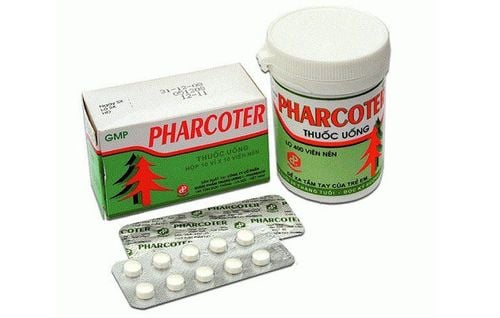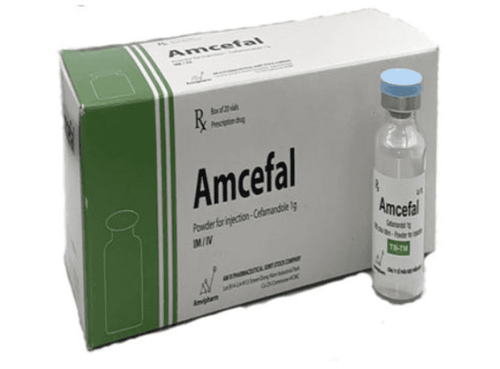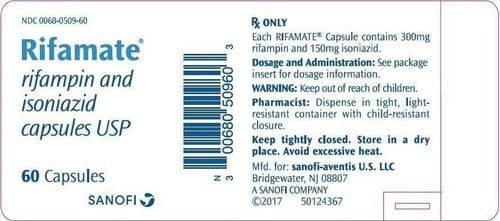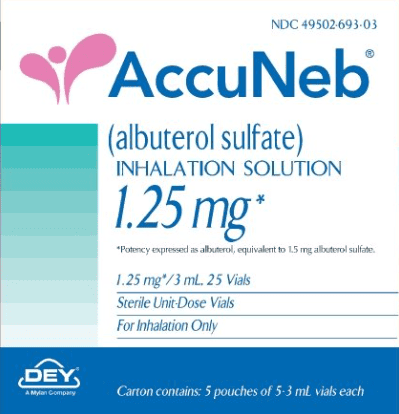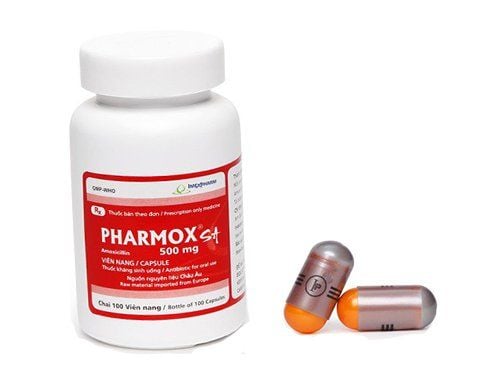This is an automatically translated article.
Firstlexin 500 is an antibiotic used in infections with bacteria sensitive to this antibiotic. To know what Firstlexin is and how it works, please refer to the article below.
1. What is Firstlexin 500?
Firstlexin 500 has the active ingredient Cephalexin 500mg. Prepared in tablet form. Cefalexin is a first-generation cephalosporin antibiotic with bactericidal action, the mechanism of which kills bacteria by inhibiting bacterial cell wall synthesis. Cefalexin is an oral antibiotic.Cefalexin is stable to the penicillinase of Staphylococcus (staphylococci), so it is effective against penicillin-resistant strains of Staphylococcus aureus. Cefalexin is active against the following bacteria: Streptococcus beta hemolytic; Staphylococcus, including strains that secrete coagulase (+), coagulase (-) and penicilinase; Streptococcus pneumoniae; some ampicillin-resistant Escherichia coli, Proteus mirabilis, some Klebsiella spp., Branhamella catarrhalis; Shigella. Haemophilus influenzae is usually less susceptible.
Note: Most strains of Enterococcus (Streptococcus faecalis) and a few strains of Staphylococcus are resistant to cefalexin, so do not use when infection with this bacterium is suspected.
After oral administration Cefalexin is completely absorbed from the gastrointestinal tract and reaches peak plasma concentrations after about one hour. Taking cefalexin with food may slow the absorption of the drug, but the total amount of drug absorbed does not change
2. Uses of Firstlexin 500
Because of its bactericidal action, Firstlexin is indicated in infections caused by susceptible microorganisms, but this drug is not indicated for the treatment of severe infections. Indications for use of this drug include:
Respiratory tract infections: Acute bronchitis and chronic bronchitis, infectious bronchiectasis. Ear, nose and throat infections: otitis media, mastoid otitis, rhinosinusitis, purulent tonsillitis and infectious pharyngitis. Urinary tract infections: Cystitis, urethritis, prostatitis. Prophylactic treatment in case of recurrent urinary tract infections. Infections in obstetrics and gynecology, after abortion. Skin, soft tissue and bone infections. Gonorrhea: Indicated when penicillin is not suitable. Oral infection. Prophylactic alternative to penicillin for patients with heart disease who must be treated for dental infections.
3. Dosage and how to use Firstlexin 500
How to use: The drug is for oral use only. The drug can be taken before or after a meal, because food does not change the total amount of drug absorbed.
Dosage:
Adults: Use with a dose of 250 - 500mg every 6 hours, depending on the degree of infection. The daily dose can be up to 4g, divided into several doses. Children 20kg: Dosage is 25-60mg/kg/day, divided into 2 to 3 times. In severe infections, the maximum dose can be up to 100mg/kg/day. In complicated, recurrent and chronic urinary tract infections, treatment should be given within 2 weeks: With a dose of 1g/time and 2 times/day. Gonorrhea: usually a single dose of 3g with 1g probenecid for men or 2g with 0.5g probenecid for women. Co-administration of this drug with probenecid prolongs the elimination time of cefalexin and increases serum concentrations by 50-100%. Note: Adjust dose in patients with renal impairment. The drug usually needs to be taken for at least 7 to 10 days, unless otherwise indicated, such as in gonorrhea.
4. Undesirable effects when taking Firstlexin 500
Like other drugs, there is a risk of side effects when taking Firstlexin 500. According to statistics, the rate of unwanted effects is about 3-6% in the entire number of patients treated.
Common may include: Diarrhea, nausea. Uncommon side effects: Eosinophilia, skin rash, urticaria, pruritus, reversible increase in liver enzymes. Rare: Headache, dizziness, anaphylaxis, fatigue, neutropenia, thrombocytopenia, abdominal pain, pseudomembranous colitis, Stevens Johnson syndrome, erythema multiforme, Lyell's syndrome , Quincke's edema, hepatitis, obstructive jaundice, genital pruritus, vaginitis, recurrent interstitial nephritis. In addition, there have also been reports of CNS symptoms such as dizziness, confusion, agitation and hallucinations, but this has not been fully demonstrated to be related to cefalexin.
How to deal with side effects;
Stop cefalexin if allergic or severe hypersensitivity reactions occur, need to go to the nearest hospital for supportive treatment. If mild form of pseudomembranous colitis usually only requires discontinuation of the drug, in moderate and severe cases, it is necessary to treat with electrolytes, protein supplements and antibiotic therapy effective against C. difficile. Other side effects: You should inform your doctor to take action.
5. Notes when taking Firstlexin 500
Some notes when taking the drug include:
Firstlexin should not be used in patients with a history of allergy to any cephalosporin antibiotics or excipients in the drug. Cephalosporins should not be used in patients with a history of penicillin-induced anaphylaxis or other severe IgE immune globulin-mediated reactions. Although cephalexin can be used for mild penicillin allergies, cross-allergic reactions can also occur, so it should be noted. This is a drug to be used under the doctor's prescription, so you should take the right dose and time to avoid drug resistance. As with other broad-spectrum antibiotics, prolonged use of cefalexin may result in overgrowth of other non-susceptible organisms (eg, Candida, Enterococcus, Clostridium difficile), in which case the drug should be discontinued. . The drug is eliminated mainly by the kidneys, so in case of renal failure, the dose of cefalexin must be reduced appropriately. Affects some tests when taking drugs such as urinary glucose by some methods, quantification of creatinine by alkaline picrate. Pregnancy: Experimental studies and clinical experience have not revealed any evidence of fetal toxicity and teratogenicity. However, cefalexin should only be used during pregnancy when clearly needed. Lactation: The concentration of cefalexin in breast milk is very low. However, careful consideration should still be given to stopping breastfeeding while the mother is taking cefalexin. Interactions with other drugs: Taking high doses of cephalosporins with other drugs that are also nephrotoxic, such as aminoglycosides or potent diuretics, such as furosemide, may adversely affect renal function. If used at the recommended dose there are no clinical problems with cefalexin. Interactions with other drugs Cholestyramine binds to cefalexin in the intestine, slowing the absorption of the drug and Probenecid increases serum concentrations and helps increase the half-life of cefalexin. Note that the medicine should be stored in a cool place with the temperature below 30 degrees Celsius and out of the reach of children. Do not use when showing signs of damage or expiry date. Above is the information about the drug Firstlexin 500, if you have any questions, you should directly ask your doctor and pharmacist to minimize side effects.
Please dial HOTLINE for more information or register for an appointment HERE. Download MyVinmec app to make appointments faster and to manage your bookings easily.





